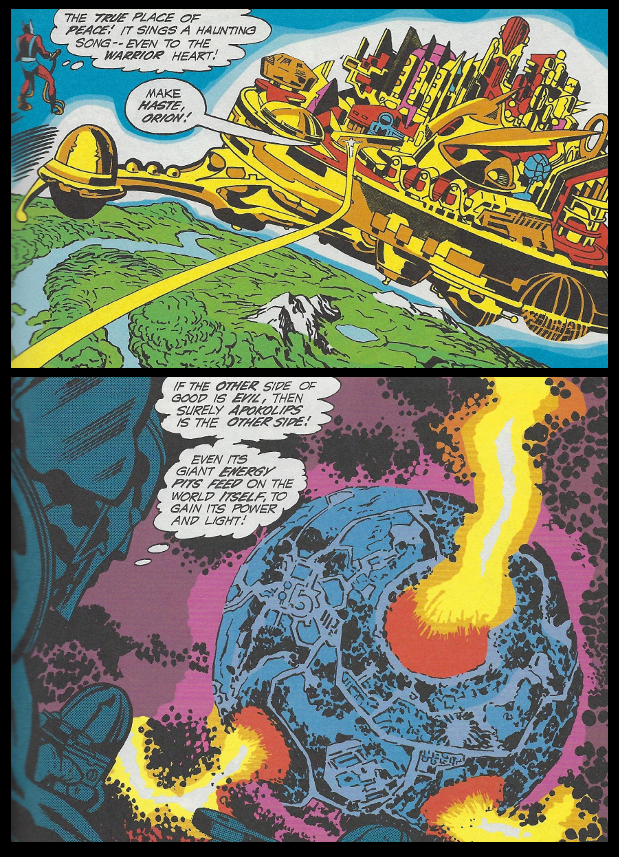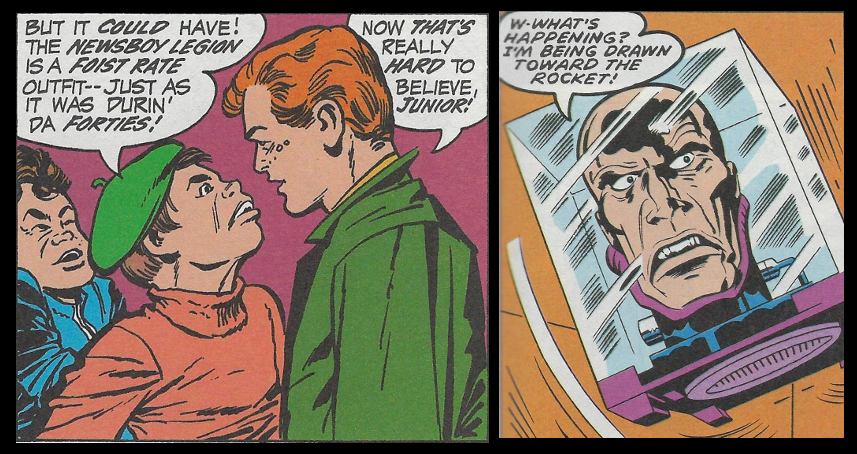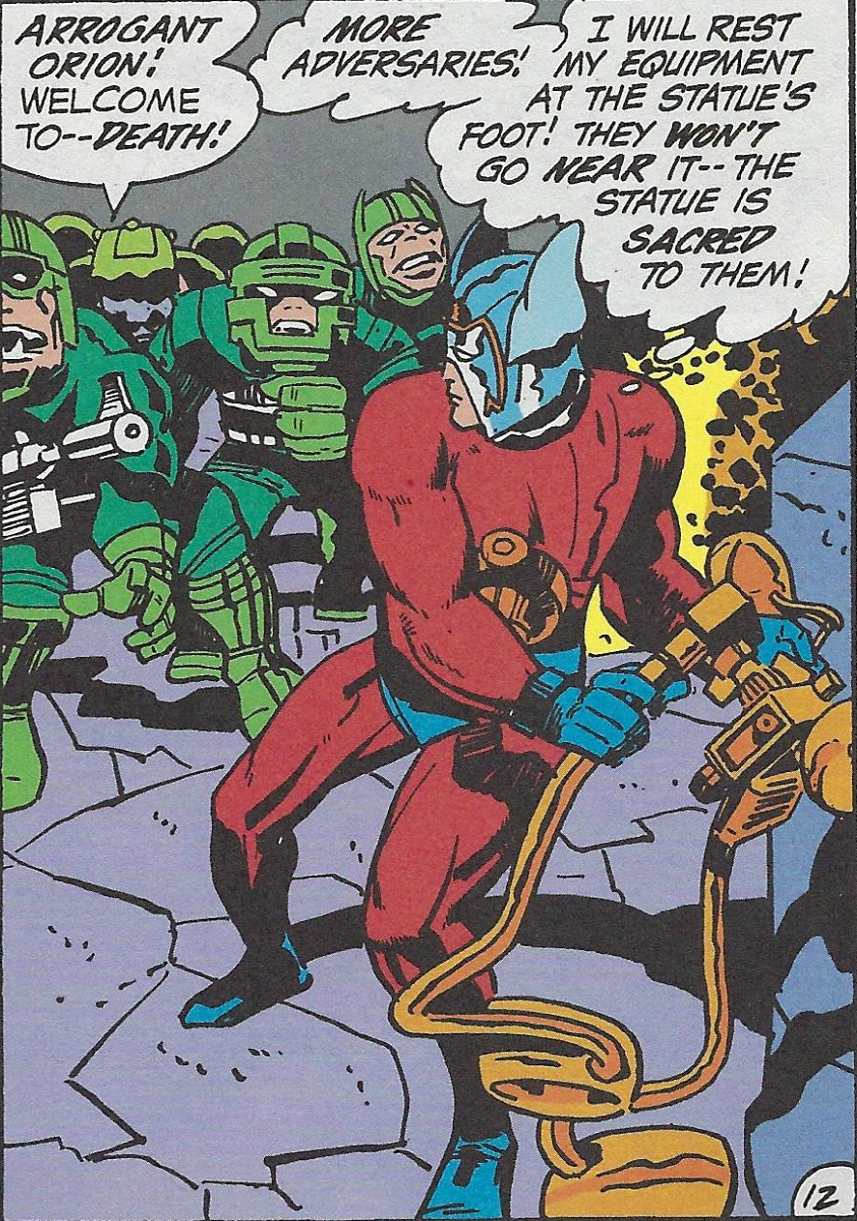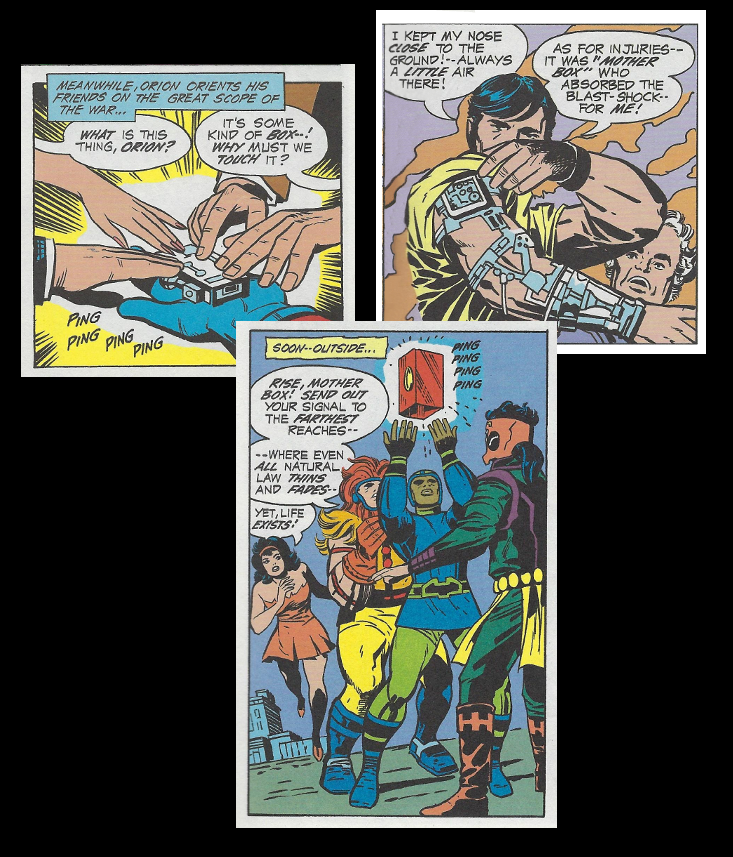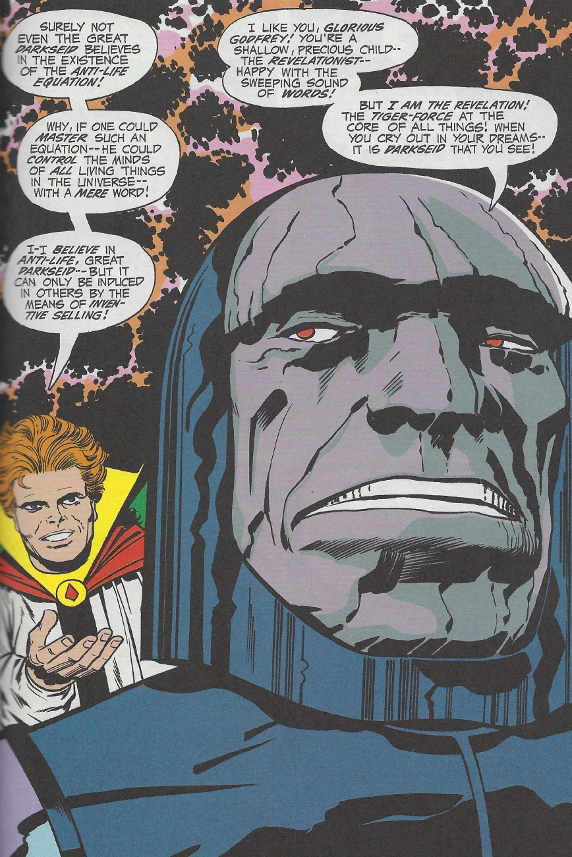And Lo! There came a time when the King left the Marvelous and Fantastic place that he helped to shape and mold into the great firm that it had become. Onward did he travel to the distinguished competition, taking his point-fingered, curvy women and bombastically muscular men with him.
If that ridiculous bit of melodrama sounds even mildly familiar, it’s because I was channeling my inner Stan Lee as I wrote the introduction. And the King to which I was referring is none other than Jack Kirby. The event was the split between Kirby and Marvel comics in 1970 and his subsequent departure for DC comics.
While these events are interesting in their own right, their particular relevance to this post is that, without this split, the world would never know of one of the most ambitious projects ever undertaken in comics: The Fourth World.
The Fourth World mythos consisted of four comics titles that Jack Kirby wrote, illustrated, and edited for DC comics from late 1970 to 1973. During those 4 years, Kirby’s grand tale was told across 4 separate titles: Superman’s Pal, Jimmy Olsen (issues #133-#148 from October 1970 to April 1972), The New Gods (issues #1-11 from February 1971 to November 1972), The Forever People (issues #1-11 from February 1971 to November 1972), and Mister Miracle (issues #1-#18 from April 1971 to March 1974). All told, at the end of his tenure, over 1500 pages of comics storytelling had come to life to tell the story of the New Gods and their struggle against Darkseid and the villainous denizens of his hell planet Apokolips.
Darkseid’s machinations in the 30th century were covered in last month’s column entitled Great Darkness, Great Tale. This month, I thought it would be appropriate to trace the roots of that story to the mythology Jack Kirby invented in the early 70s.
The basic premise of the story is best told in Kirby’s own words:
There came a time when the old gods died! The brave died with the cunning! The noble perished, locked in battle with unleashed evil. It was the last day for them! An ancient era was passing in fiery holocaust.
The final moment came with the fatal release of indescribable power – which tore the home of the old gods asunder – split it in great halves – and filled the universe with the blinding death-flash of destruction.
In the end there were two giant molten bodies, spinning slow and barren – clean of all that had gone before – adrift in the fading sounds of cosmic thunder.
Silence closed upon what had happened – a long, deep silence – wrapped in massive darkness…it was this way for an age… THEN—THERE WAS NEW LIGHT!
In Kirby’s new world (fourth one?), the two molten bodies, which started barren, eventually sprouted life, and in some cosmic Doctor Jekyll and Mister Hyde transformation, became New Genesis and Apokolips.
For another age, the two planets warred against each other, neither able to gain the upper hand. Finally, Izaya, the leader of New Genesis, struck a deal to assure peace with Darkseid, the tyrant of Apokolips. Each would send his only son as surety to be raised by the other. Thus Darkseid’s bestial child Orion was raised on New Genesis and Scott Free, Izaya’s boy, was doomed to a childhood in the orphanages of Apokolips.
The beginning of Kirby’s narrative occurs when the denizens of both planets start appearing on Earth and new hostilities begin between the two races of cosmic beings. The primary storyline centers on Darkseid’s pursuit of the Anti-Life formula
by violating the minds of certain humans
found to be holding the secret of Anti-Life.
Against this central backdrop are dramas of Scott Free, who has escaped Apokolips and has put his celestial abilities to work as an escape artist working under the name Mister Miracle, and of the Forever People, a cadre of ‘hippie’ New Gods who are seeking a simpler life away from the strife associated with the war.
Kirby’s storytelling is certainly a product of his pop-art vision and the youth-centered counter-culture of the times. One such storyline has Superman and his pal Jimmy Olsen encountering a group of dropouts who’ve created what must be the greatest of all treehouses
The campiness doesn’t end there. There are examples of exotic deathtraps
psychedelic locales
and eccentric characters
Kirby’s style and consummate skill as an illustrator are clearly on display on each and every one of those 1500 pages. Unfortunately, although his ideas really are cosmic and engaging, his storytelling execution left much to be desired. Plot points often lacked in logic
and his dialog in style.
The rare moments of raw emotion were few and far-between but when encountered were truly touching
As a result, the series were a mixed bag and the overall storyline suffered. Sales never lived up to the promise that no doubt was first conceived when Kirby left behind the string of hits he had at Marvel. Nonetheless, his mythology has endured in large part due to his original ideas, like the living computers known as Mother Boxes
and the enduring and unadulterated evil of Darkseid.
The romance between Scott Free and Big Barda,
one of Darkseid’s female operatives sent to retrieve him, was also one of the more intriguing of Kirby’s concepts and, perhaps, explains why Mister Miracle ran the longest of all the Fourth World books Kirby created.
Soon after the demise of the Fourth World tale, Kirby returned to Marvel but never quite to the glory or success that he had prior to his departure. But the New God seed he planted at DC would continue to bloom and wither and bloom again over the decades since – and all comic book fans are more enriched as a result.


